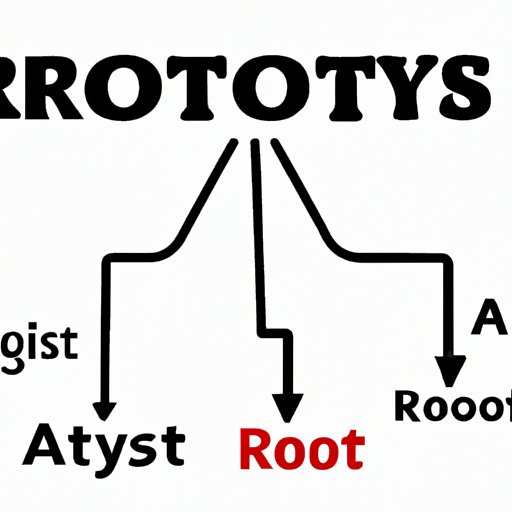
Introduction
Problem-solving is an essential component of both personal and business success. However, merely treating symptoms rather than addressing the root cause of a problem can yield temporary or insignificant results. This is where root cause analysis (RCA) comes into play. In this comprehensive guide, we’ll explore the importance of RCA, its many benefits, and how to conduct successful root cause analysis in your organization.
Unpacking the Process of Root Cause Analysis: A Comprehensive Guide
RCA is a problem-solving methodology designed to identify the underlying cause(s) of a problem. RCA can be used in various industries and situations, including healthcare, manufacturing, and safety. The process of RCA involves the following steps:
– Identification of the problem: The first step is to define the problem using specified criteria like location, time, frequency, and magnitude.
– Data collection: All relevant data about the problem and its surrounding context is collected.
– Data analysis: Analyzing the data collected to identify the cause(s) of the problem and determine if they are direct or contributing factors.
– Root cause identification: Identify and analyze the underlying causes of the problem.
– Action plan development: Develop appropriate countermeasures to eliminate the root cause(s).
– Implementation of action plan: Implement the countermeasures, and monitor the effectiveness of the action taken.
Looking Beyond the Surface: Understanding the Importance of Root Cause Analysis
Treating symptoms without addressing the root cause of a problem is a temporary solution that does not provide long-term benefits. By identifying the root causes of a problem, we can prevent recurrence and minimize the impact of similar problems in the future. Moreover, an organization that does not address root causes are likely to experience negative consequences such as poor employee morale, decreased productivity, and reduced profitability.
The Power of Root Cause Analysis in Solving Business Problems
RCA has various applications in business, enabling an organization to identify the root cause(s) of a problem and develop countermeasures to prevent recurring problems. RCA can be used for various business scenarios, including:
– Customer service issues
– Decreased performance or productivity
– Quality issues
– Equipment malfunction or downtime
– Workplace injuries and accidents
Implementing RCA in a business can lead to increased performance, improved customer satisfaction, and reduced costs.
Mastering the Tools of Root Cause Analysis
Various tools can be used to facilitate RCA, including but not limited to: flowcharting, root cause maps, fishbone diagrams, and 5 Whys. These tools are designed to identify the underlying causes of a problem. However, one tool may be more appropriate than the other, depending on the situation. For example, the 5 Whys technique is useful for identifying the primary cause of an issue. Still, it does not guarantee comprehensiveness of all the factors contributing to the problem.
Why You Need to Conduct a Root Cause Analysis: The Benefits and Best Practices
The importance of RCA cannot be overstated. Not only does RCA facilitate the implementation of effective countermeasures, but it also helps in demonstrating a company’s commitment to continuous improvement by identifying the underlying causes of problems and developing countermeasures to prevent their recurrence. Best practices for conducting RCA are:
1. Form a cross-functional team: RCA teams should include employees from different departments and levels. This ensures that various views and experiences are taken into account when conducting RCA.
2. Establish criteria for problems: Problems are not always the same; therefore, establish guidelines for the types of problems that will trigger an RCA process.
3. Train the team on RCA: It is essential to train the team members on RCA techniques and tools. Properly trained RCA team ensures that the process is effective and efficient.
From Symptoms to Solutions: A Step-by-Step Guide to Performing Root Cause Analysis
Successful RCA requires careful planning, systematic analysis, and objective identification of root causes. The following steps provide a comprehensive guide to conducting RCA:
1. Define the problem: Identify and define the problem to be analyzed.
2. Assemble the team: Form a cross-functional team with members from different departments.
3. Collect data: Gather all necessary data, including process maps, workflow diagrams, and other relevant information.
4. Identify root causes: Use problem-solving tools like fishbone diagrams or 5 Whys to identify the root cause(s) of the problem.
5. Develop an action plan: Use the information obtained from root cause analysis to develop an action plan that addresses the root cause(s) and prevents recurrence.
6. Monitor and evaluate results: Monitor the implemented solutions and assess their effectiveness.
Conclusion
Root cause analysis is a vital tool for problem-solving, regardless of the industry or situation. Conducting RCA enables businesses to identify the underlying cause of a problem and develop countermeasures that prevent its recurrence. By prioritizing root cause analysis, a business can benefit from increased performance, improved customer satisfaction, and reduced costs. Remember, solving surface-level symptoms is a temporary solution that does not guarantee long-term benefits. Therefore, it’s essential to conduct RCA, identify the root cause of a problem, and develop permanent countermeasures to improve the future.





